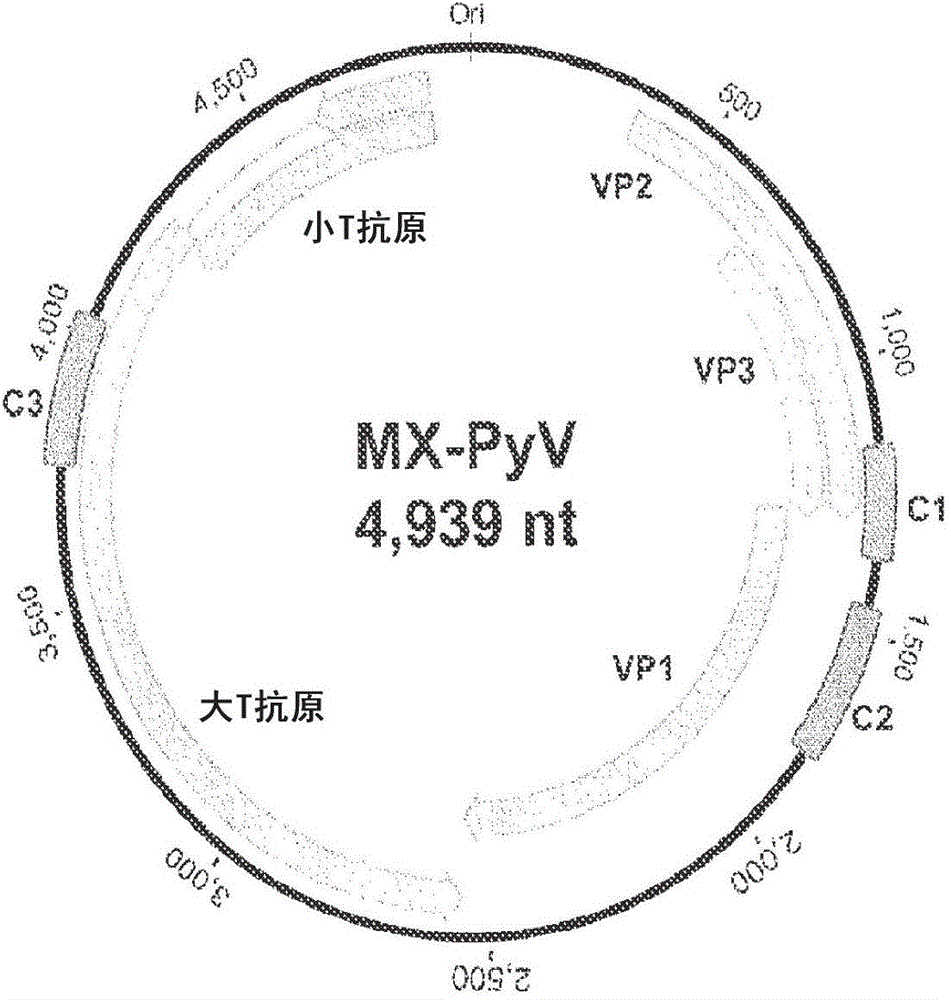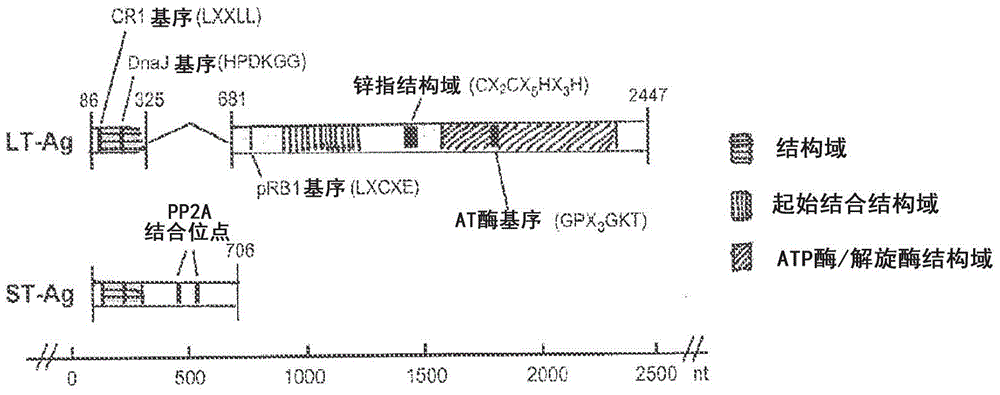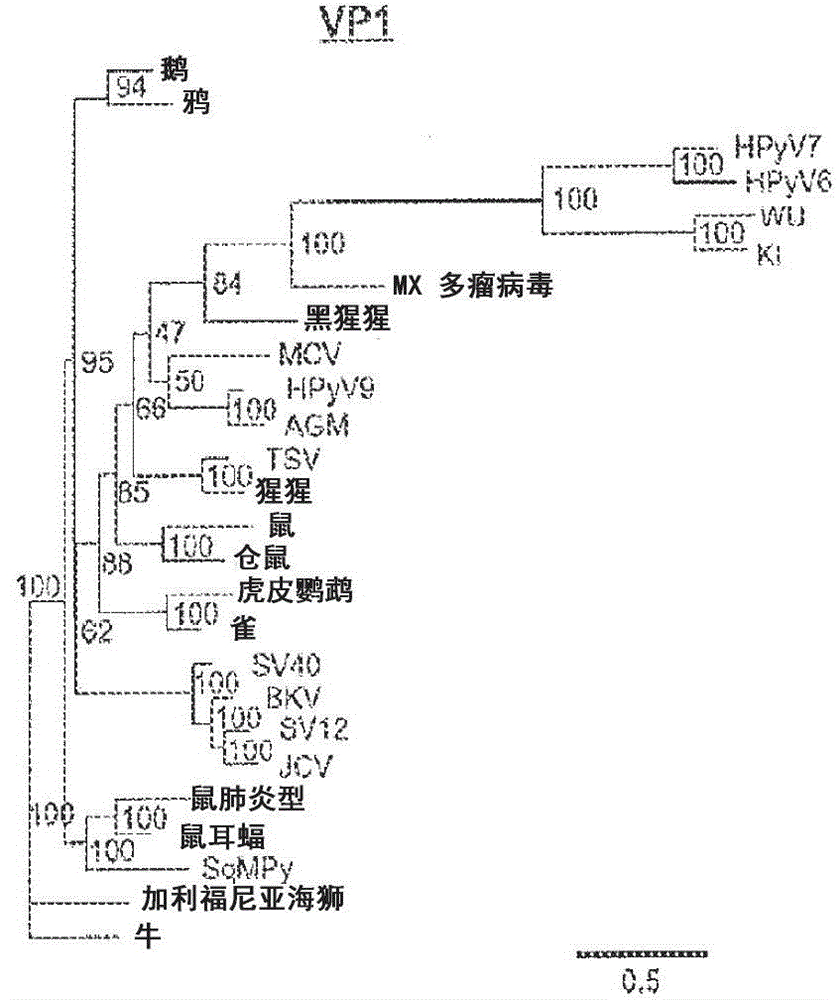A novel polymavirus associated with diarrhea in children
A technology with the same identity and the same length, which can be used in the treatment or prevention of MXPyV infection and the identification of anti-MXPyV compounds, and can solve problems such as inability to replicate
- Summary
- Abstract
- Description
- Claims
- Application Information
AI Technical Summary
Problems solved by technology
Method used
Image
Examples
preparation example Construction
[0203] The preparation and screening methods of combinatorial chemical libraries are well known to those skilled in the art. Such combinatorial chemical libraries include, but are not limited to: peptide libraries (see, for example, U.S. Patent No. 5,010,175, Furka, Int. J. Pept. Prot. Res. 37:487-493 (1991) and Houghton et al., Nature 354:84-88 (1991)). Other chemical types that generate chemical diversity libraries can also be used. These chemical types include but are not limited to: peptoids (such as PCT publication WO 91 / 19735), coded peptides (such as PCT publication WO 93 / 20242), random biological oligomers (such as PCT publication WO 92 / 00091), benzobis Nitrogen (such as US Patent 5,288,514), various isomers such as hydantoins, benzodiazepines and dipeptides (Hobbs et al., Proc. Nat. Acad. Sci. USA 90: 6909-6913 (1993)), ene Polypeptides (Hagihara et al., J. Amer. Chem. Soc. 114: 6568 (1992)), non-peptide peptidomimetics with a glucose scaffold (Hirschmann et al., J. ...
Embodiment 1
[0237] Example 1: Identification of a new type of human polyomavirus (MXPyV)
[0238] method
[0239] Stool sample collection, nucleic acid extraction and Illumina deep sequencing
[0240] Anonymous samples were collected from 96 children suffering from acute diarrheal diseases in three different Mexican states between 2008 and 2009. Diarrhea is defined as: diarrhea or liquid bowel movements three or more times a day, and the sample is taken before the child is treated with rehydration and antibiotics (if prescribed by the doctor). Virus particles were purified from a stool sample by the following method: A suspension consisting of 1 mL of phosphate buffered saline, 0.1 g glass beads, 100 μL of chloroform and 0.2 g of feces was produced, and the suspension was shaken by a mechanical oscillator for 5 minutes, and then 1,000 g in a centrifuge Centrifuge for 20 minutes, and then recover the supernatant. Then, 500 μL of the supernatant was passed through a 0.45 μm filter and treated ...
Embodiment 2
[0285] Example 2: The prevalence of MX polyoma virus in clinical samples
[0286] A real-time RT-PCR assay targeting the VP1 gene was designed to study the prevalence of MX polyoma virus in clinical samples (Tables 2 and 5). The inclusion of the reverse transcriptase step greatly improved the sensitivity of MXPyV detection (Table 5), presumably because it enhanced the detection of viral mRNA transcripts in infected host cells. The RT-PCR results were confirmed by bands of expected size on gel electrophoresis, melting curve analysis and sequencing. All positive results were also independently confirmed by two additional traditional RT-PCR tests targeting different regions of VP1 and the LT-Ag gene. To detect MXPyV in stool samples of children with or without diarrhea from two continents, the prevalence in Mexico is 12.5% (12 out of 96 cases) and the prevalence in California is 3.3% (18 out of 546 cases). Cases), while the prevalence in Chile is 4.2% (4 out of 96 cases). The ...
PUM
| Property | Measurement | Unit |
|---|---|---|
| molecular weight | aaaaa | aaaaa |
Abstract
Description
Claims
Application Information
 Login to View More
Login to View More - R&D
- Intellectual Property
- Life Sciences
- Materials
- Tech Scout
- Unparalleled Data Quality
- Higher Quality Content
- 60% Fewer Hallucinations
Browse by: Latest US Patents, China's latest patents, Technical Efficacy Thesaurus, Application Domain, Technology Topic, Popular Technical Reports.
© 2025 PatSnap. All rights reserved.Legal|Privacy policy|Modern Slavery Act Transparency Statement|Sitemap|About US| Contact US: help@patsnap.com



